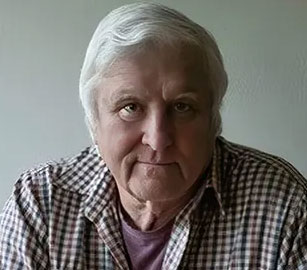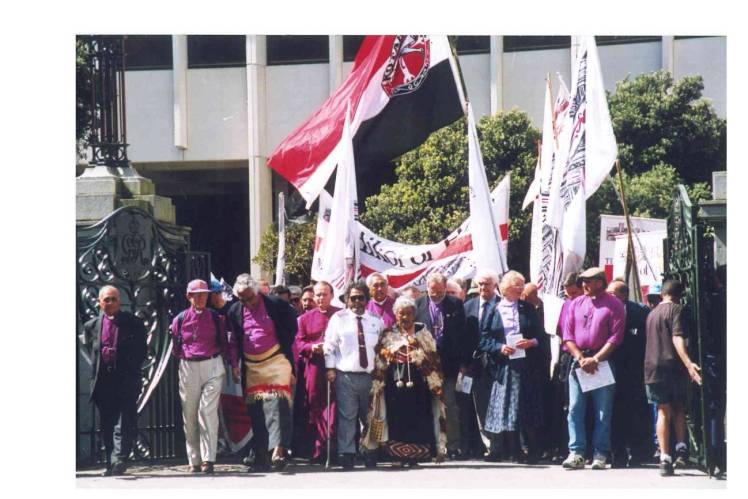This letter was letter of the week in The Listener 21 October 2023
In Reference to John Bluck talking about The Hikoi of Hope and the Anglican Church. I was part of the Hikoi he refers to and in Auckland was told by a senior member of the clergy that this was the beginning of something important. I said to him – no it is the end of something. Everything that has happened since has reinforced my assessment, including this article by John Bluck. It was the end of something.
In 1977 the Anglican Church first ordained women. 1979 I and many others in the Anglican Church were involved in declaring our spaces “Nuclear Free” as part of the Nuclear Free movement of the time. In 1981 the Anglican Church was torn apart as those in the cities protested the Springbok Tour while many in the provinces actively supported the Tour and some Churches closed as a result. In 1986 the Church was once again torn apart again around homosexual law reform. The Church on the whole struggled with this and took a much longer to adjust to what is now accepted in our wider society. In 1989 the Anglican Church in NZ ordained the first woman diocesan bishop. in 1992 the Anglican Church adopted a three tikanga constitution sharing authority and partnership across Maori, Pakeha and Pasifika.
In all these cases The Anglican Church was found to be on the right side of history as it showed leadership and did the work involved to plot a principled and visionary path into the future.
So why do I think the Hikoi of Hope marked the end of something?
I think the seeds of this lie in the dates above. The late 80s brought us Rogernomics, and its focus on individuals and IMO a move away from movements of solidarity, towards looking inwards to personal salvation.
Progressive people within the Anglican Church slipped out the back door as they found less and less they could relate to. Radical clergy became thin on the ground as fewer put their names forward for selection, and even fewer saw a pathway for them within the Church as it was becoming.
Like me, many lifelong Anglicans with a radical bent have simply slipped out the back door and put our energy into the real movements for change that continue – working for a Living Wage, supporting a wealth tax and co-governance.
John Bluck’s Opinion piece in The Listener (30 Sept 2023)
March of time

The fight against poverty led the Anglican Church to launch the Hikel of Hope in 1998, Similar conditions apply now but where are the hikol, asks John Bluck.
Twenty-five years is a long time between drinks in our history: Back in 1998, Te Tiriti o Waitangi wasn’t such a hot button topic, but poverty was. Unemployment was running at more than 18% for Maori Child
poverty rates had trebled in the previous decade.
The Anglican Church decided to do something about that. Its 1998 General Synod/Te Hinota Whanui resolved to march on Parliament with a hikoi focused on poverty. It had become a co-governing body after adopting a tikanga-based power sharing constitution six years earlier. The synod decision evolved out of a call for a general strike and was distilled into five simple demands: real jobs, affordable housing, a trustworthy health system, adequate wage and benefit levels and accessible education.

Te Hikoi mo te Tümanako mo te Rawakore, The Hikol of Hope began from the Far North and the Deep South early in September, gathering marchers and supporters along the road, involving some 38,000 of them by the time it reached Wellington and filling Parliament grounds on October 1. The outpouring of support en route was huge; food, hospitality and beds, marae and civic welcomes, bystanders joining the chant of “enough is enough”. A young boy in a roadside crowd offered Nick Mountfort, one of the marchers, a Marmite sandwich and a can of Sprite. Loaves and fishes all over again. The hikoi gathered personal stories of poverty as it progressed, 200 pages of them, packaged in kete that were presented to MPs on Parliament steps. Some accepted the loaded gift, some didn’t appear. Opposition leader Helen Clark did. Then-prime minister Jenny Shipley, a Presbyterian minister’s daughter, didn’t. But she did meet an ecumenical delegation of church leaders soon after and said their criticism was unkind.
What angered her more was a paper presented by Professor Whatarangi Winiata (Ngāti Raukawa) at the same time, calling for bicultural partnership giving Mãori control over delivery of their resource needs, Shipley rebranded this as a call for a “separate Mãori parliament”. The meeting with Winiata and church leaders ended unhappily. It lost its focus on poverty, which delegation leader Bishop John Paterson said was “the bottom line for the hikoi”. Media gleefully pounced on the co-governance agenda as a shift from “sensible Anglican
& DYLAN HOLLS
BAKING
YESTERYEAR
opinion”. Former MPMichael Laws
of Hope
The 1998 hikel was to influence the subsequent government of Helen Claric
The co-governance agenda entwined in the protest
was especially prophetic.
labelled it the work of “Fringe nutters. But the co-dever fathe proposal was hardly a surprise, given that Anglicans had been practising it for six years, working towards it for 90, and promoting it around the country as a model for the nation. The road out of poverty was a two-lane highway for Anglicans – three actually, including Pasifika in the tikanga-based model of governance.
The hikoi won widespread praise – from Maori
T
Queen Dame Te Atairangikaalu to Helen Clark, Whe acknowledged its influence on her Labour government and its first Budget. Maori rights activist and MP Dame Tariana Turia hailed it as a “moment in our histor/song with the foreshore and seabed campaign. But media celebrities of the day hated it. Paul Holmes led the charge, dismissing the hikoi as a “hiccup of hypocrisy… The Anglicans are a disgrace and their (expensive) Auckland cathedral is a disgrace the architecture monstrous. A decade later, he was happy (hopefully) to be buried from there.
In retrospect, the Hikoi of Hope was a remarkable event, led by a church not accustomed to street marches before. and never more visible since. And the to-governance agenda entwined in the protest was especially prophetic.
But did that walking for change make any difference? Child poverty rates have fallen, though the wealth gap has climbed And hikoi to address that are harder to find than ever.1
John Bluck is a retired Anglican bishop and the author of Becoming Pakeha: A journey between two cultures.
WANT TO GET SOMETHING OFF YOUR CHEST? Send us 600 words on a topic you know something about and if we publish it, you’ll win a book. This week, it’s Baking Yesteryear by B Dylan Hollis.
www.listener.coRE LISTENER SEPTEMERIN VER
Leave a Reply